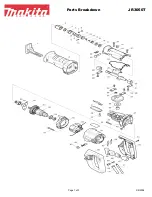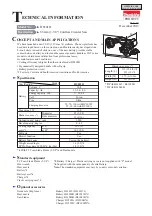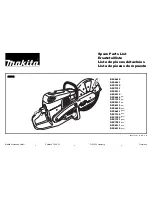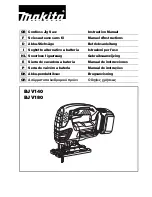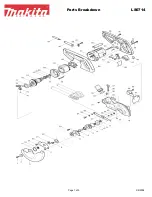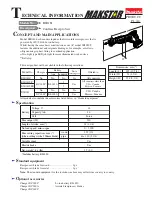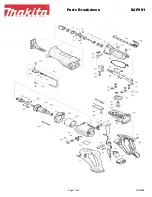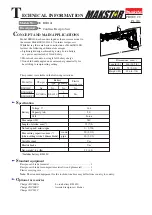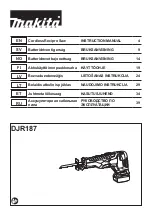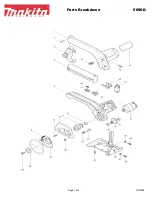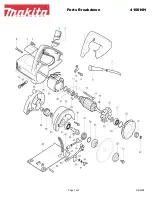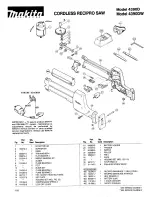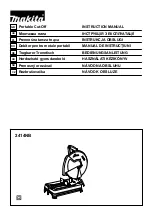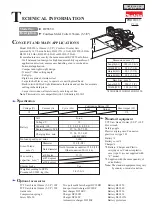
GB
9
• The mitre saw must not be lubricated, because it always
cuts dry surfaces; all moving machine parts are self-
lubricating.
• In the event of service work, personal protective equip-
ment must always be work (protective goggles and
gloves).
• Remove saw dust and chips regularly by cleaning the
cutting zone and support surfaces.
We recommend using a suction tool or brush.
ATTENTION:
Do not use compressed air!
Check the saw blade from time to time: If problems arise
with the blade, it must be ground by a specialist or re-
placed, depending on the condition.
DECOMMISSIONING OF THE MACHINE
After the machine is decommissioned it can be disposed of
with normal industrial waste.
Disposal
The packaging is wholly composed of
environmentally-friendly materials that can
be disposed of at a local recycling centre.
Contact your local refuse disposal authority
for more details of how to dispose of your
worn out electrical devices.
• Type of current for the motor
• Machine data - type plate
• Machine data - type plate
Accessories
SAW DUST EXTRACTION
The mitre saw is equipped with an extraction port to which
an extraction system can be connected. Alternatively, a dust
bag can also be attached.
The hose of the extraction system is fastened on the extrac-
tion port with a clamp. We recommend emptying the bag or
container from time to time and cleaning th
e fi
lter.
The air speed of the suction system must be at least 30
metres per second.
Maintenance
If personnel qualified for unusual mainte-
nance tasks or repairs must be obtained
during of after the warranty period, please
always contact a service point recommend-
ed by us or contact the manufacturer.
• Only perform repair, maintenance and cleaning work
as well as the correction of malfunctions with the drive
switched o
ff
as a basic rule.
• All protective and safety equipment must be reassembled
immediately after repair, maintenance is completed.
NORMAL SERVICE TASKS
Normal service tasks can also be performed by untrained
personnel and are all described in the preceding sections
and in this chapter.
Troubleshooting
Fault
Possible cause
Remedy
Motor does not work.
Motor, cable or plug defective, fuses burnt.
Arrange for inspection of the machine by a specialist.
Never repair the motor yourself. Danger! Check fuses
and replace as necessary.
The motor starts up slowly
and does not reach
operating speed.
Voltage too low, coils damaged, capacitor burnt.
Contact the utility provider to check the voltage. Arrange
for inspection of the motor by a specialist. Arrange for
replacement of the capacitor by a specialist.
Motor makes excessive
noise.
Coils damaged, motor defective.
Arrange for inspection of the motor by a specialist.
The motor does not reach
its full power.
Circuits in the network are overloaded (lamps,
other motors, etc.).
Do not use any other equipment or motors on the same
circuit.
Motor overheats easily.
Overloading of the motor, insufficient cooling of
the motor.
Avoid overloading the motor while cutting, remove dust
from the motor in order to ensure optimal cooling of the
motor.
Reduced cutting power
when sawing.
Saw blade too small (ground too much).
Readjust end stop of the saw unit.
Saw cut is rough or wavy. Saw blade dull, tooth shape not appropriate for
the material thickness.
Resharpen saw blade and/or use suitable saw blade.
Workpiece pulls away
and/or splinters.
Excessive cutting pressure and/or saw blade not
suitable for use.
Insert suitable saw blade.






























